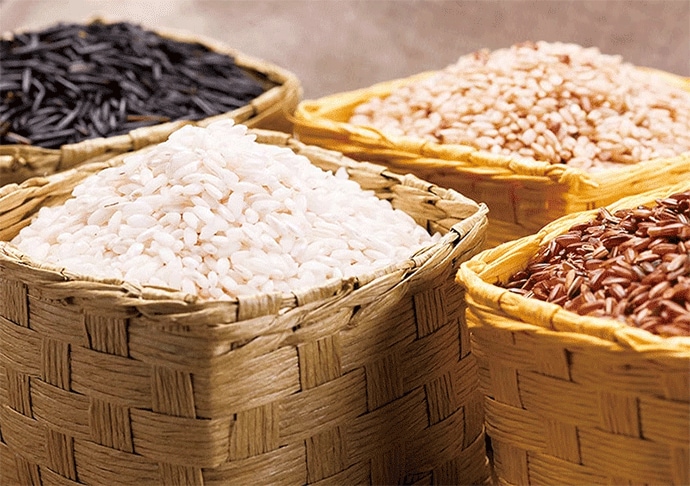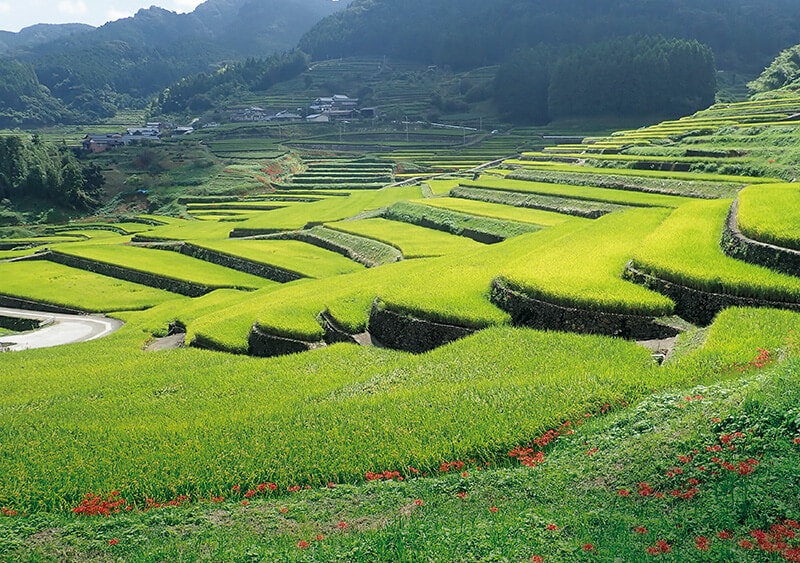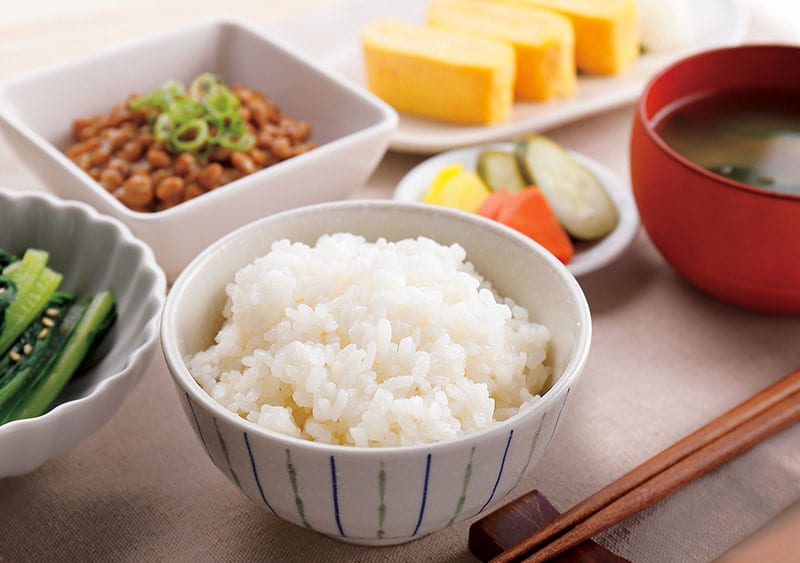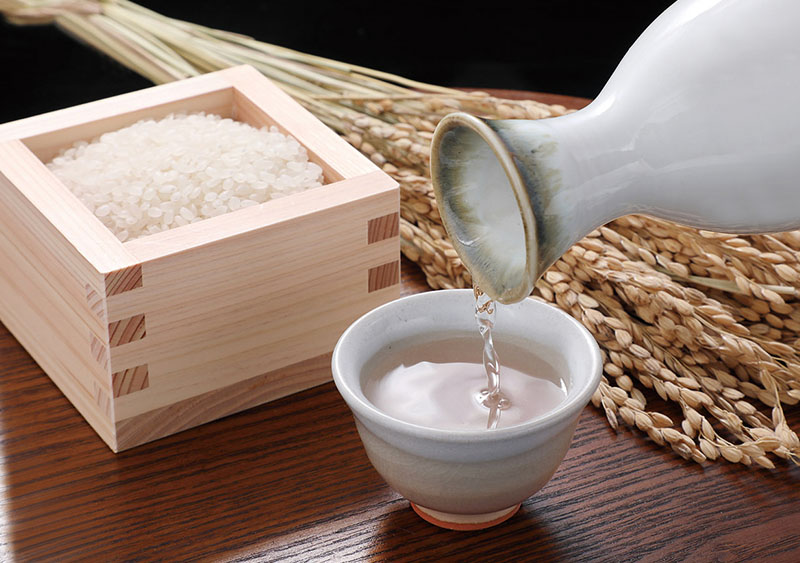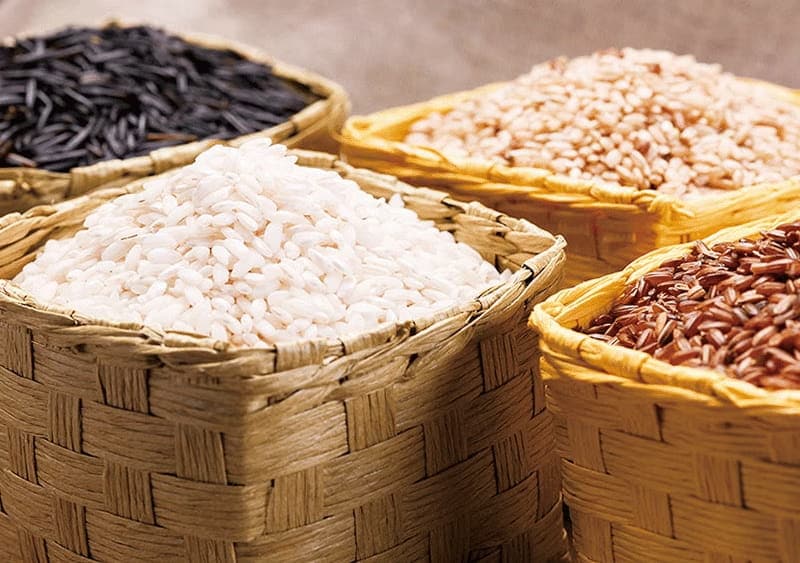
Origins and Varieties
Food Forum takes up the topic of rice in a new series, starting with a look at its history and the types of rice enjoyed globally.
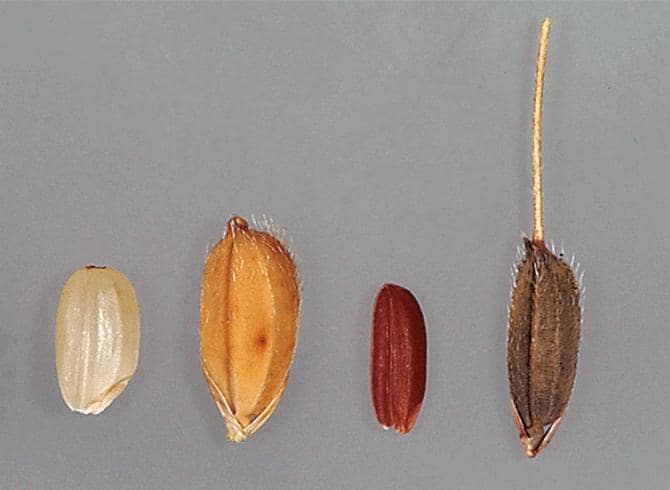
Courtesy of Yo-Ichiro Sato
It is unknown when humans began to consume rice, but its cultivation is believed to have originated in the region of China’s Yangtze River basin, some 7,000 to 8,000 years ago. Prior to its domestication, rice consisted of the grains of grasses which, today, we refer to as wild rice. The seeds of wild rice have a black hull with a spine-like projection called the awn. Inside the hull is a bran-covered grain that we call “brown rice”; in wild rice this color is somewhat reddish brown in appearance. Cultivated rice was eventually disseminated throughout Southeast Asia, and around 3,000 years ago, it came to be cultivated in Japan and other regions of southern Eurasia. Rice was grown in Europe by around the early Christian era, and is thought to have reached the Americas by the seventeenth or eighteenth century.
Rice strains
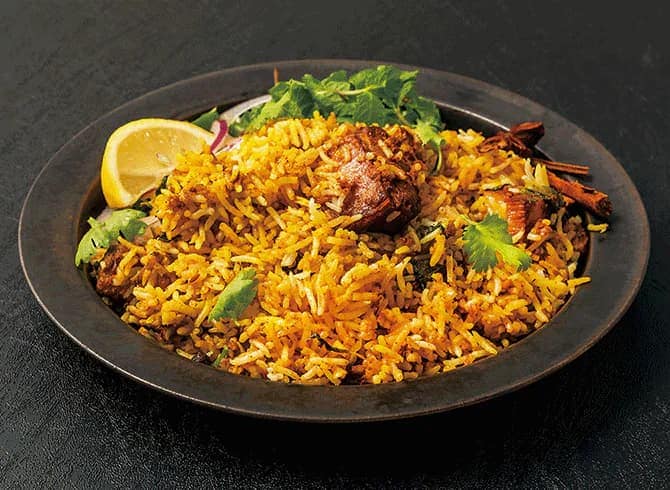
In Asia, most think of rice (Oryza sativa) as being divided into two categories: indica and japonica. Indica and japonica are not differentiations that are the result of cultivation; rather, species of wild rice originally included both. This general species classification by variety is perhaps less known in Europe and the Americas, where rice is more commonly categorized by characteristics of aroma in fragrant rices such as basmati or jasmine rice, or by well-known names such as Carnaroli rice. Indica rice, which accounts for 80 percent of world rice production today, is not sticky, whereas the texture of japonica rice is very much so. Another common assumption in Asia is that indica is “long-grained” and japonica is “short-grained.” This so-called identification based on the shape of the rice grain, long considered “common knowledge,” has been found to be inaccurate; for example, there is a long-grained japonica cultivar grown in the Mississippi valley in the US.
Cultivation and production
The category of rice first cultivated in the Yangtze basin appears to have been japonica. The origins of indica remain unknown, but it is thought to have developed somewhat later, in tropical Asia, where food resources in early times may have been plentiful enough to support a certain population without crop cultivation. Figure 1 illustrates the regions where japonica and indica are cultivated around the world. Cultivation of japonica extends to Europe and the US—a much broader area than indica. There are two varieties of japonica rice, temperate and tropical. Distribution of the former is limited to Japan, the Korean peninsula, northern China, the US west coast and Australian east coast. From the latter half of the twentieth century, hybrid species of both indica and japonica have been developed under various international organizations, and have since spread rapidly. Rice is third after corn and wheat among types of grain produced worldwide, and Figure 2 shows the volume of global rice production: approximately 500 million tons of rice are grown, primarily in China and India. Annual rice consumption is over 200 kilograms per capita in Myanmar, Vietnam and Bangladesh—more than four times that of Japan (around 50 kilograms).
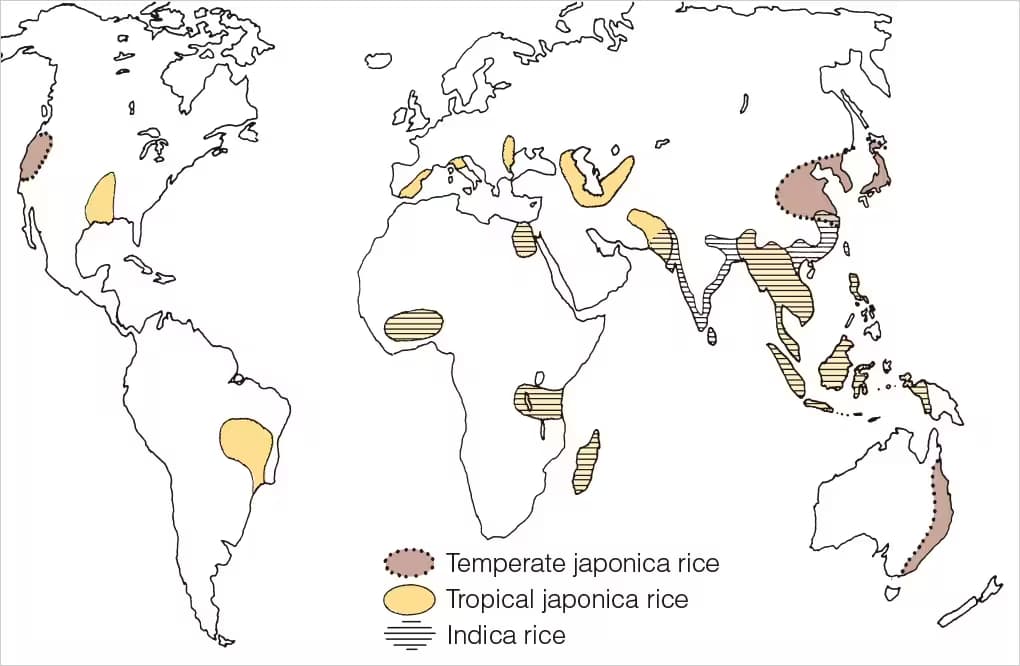
Courtesy of Yo-Ichiro Sato
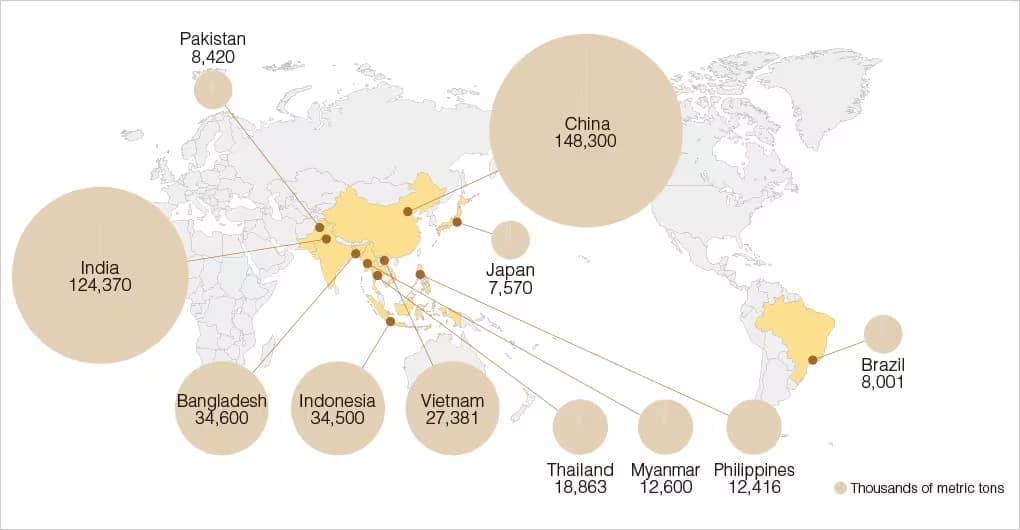
Source: 2020/21 milled production; Production, Supply and Distribution, United States Department of Agriculture (USDA) as of 12/09/2022
Glutinous and non-glutinous
Rice is also categorized as glutinous and non-glutinous. Non-glutinous rice, Japan’s staple food, contains two types of starch, amylose and amylopectin, and appears translucent. Shiny white glutinous rice, called “sticky rice,” is composed only of amylopectin, which, owing to its particular molecular structure, contributes to its sticky texture and opaque appearance. (Glutinous rice is used to make mochi in Japan.) In glutinous rice, a mutation took place in the DNA sequence of the gene that synthesizes amylose, causing that process to be blocked; it is unknown where or when this mutation occurred, but it is an astonishing fact that, sometime during the long history of cultivation, a single mutation generated an entire culture of glutinous rice consumption: it is the staple in some regions, such as in northern Thailand and Laos, for example, where people consume steamed glutinous rice for three meals a day, using their fingers. The indica variety also includes glutinous types, so it is a fallacy to assume that all indica rice is dry and flaky, eaten with a spoon.
“Colorful” rice
As already mentioned, unpolished wild rice appears reddish brown; cultivated rice with this characteristic is known as “red rice.” Most unpolished grains of cultivated rice are not red, suggesting that pigment has been lost through mutation. There are both glutinous and non-glutinous varieties of red rice. The interior of some non-glutinous red rice appears red when the unpolished grain is sliced in cross-section, leading to the notion that the red color is consistent throughout; however, the reason for this is owing to the translucence of the grain, which allows the surface color to show through. Another variety called “purple-black rice” is a mixture of anthocyanin pigments and chlorophyll.
From the grains of ancient wild grasses, many varieties of rice have evolved over thousands of years, mainly through mutations and various other factors, including the intentional perpetuation of such mutations, and natural crossbreeding. Today, this globally consumed grain sustains millions around the world.
Yo-Ichiro Sato was born in 1952 in Wakayama Prefecture. He holds a PhD in agriculture from Kyoto University. He has been director of the Museum of Natural and Environmental History, Shizuoka since 2021, and has served as distinguished professor at Kyoto Prefectural University since 2019. His many publications include Shoku no Jinruishi (Human history of food, 2016), and Kome no Nihonshi (Rice in Japanese history, 2020).

